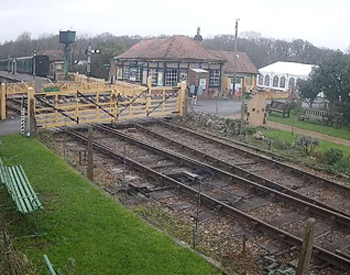Home » Heritage » Our Rolling Stock » Self-propelled vehicles » Drewry Railcar No 2
drewry railcar no 2
the trams on the pier
On 29th August 1864 The Ryde Pier Company opened a standard gauge horseworked tramway along the length of the ½ mile pier. The Pier Company subsequently experimented with steam tram engines and steam tram cars, and, in 1886, they ultimately became pioneers in the use of electric traction. In 1927 the Siemens electric power system was abandoned in favour of petrol-engined rail-cars.
Built by the Drewry Car Co for the Southern Railway, these tramcars were shipped to the Island before being driven to Ryde Esplanade on the mainline railway where they were jacked over the platforms in a special traversing cradle onto the tramway pier. They were somewhat quirky vehicles. Because they ran on their own tracks, there was never any need or attempt to make them compatible with conventional rolling stock. As the journey only lasted a few minutes, capacity was always considered more important than comfort. They had wooden slatted seats along each side with hanging straps for standing passengers. Each tram set had a nominal capacity of around 90 including standees but this was regularly exceeded. The driving arrangements would certainly have raised a few eyebrows among today’s health and safety fraternity as the trams could only be driven from one end and were reversed up the pier with the aid of a unique countdown marker device in the cab approaching the Pier Head but otherwise nothing more sophisticated than a rear-view mirror! As may be imagined, collisions with the stop blocks were not unknown. The petrol engines were replaced by diesel in 1958/9 and in 1968 an inspection of the tramway pier and rolling stock resulted in the system being condemned, with closure following on 26th January 1969.
preservation
At this point, Car No.2 was purchased by the ‘Island Vintage Transport Group’. It remained on the pier for some months until transported by road to Newport Station, where the Wight Locomotive Society – the founding organisation of the Isle of Wight Steam Railway – was then based. In preparation for transportation the bodywork was removed in sections and covered storage found. Later it needed to be removed but was then sadly left in the open to decay. Parts such as doors, windows and fittings were removed and the remainder scrapped. This left the chassis, engine and running gear complete.
For a year or so, the powered chassis proved useful for running materials around Newport Station. On 24th January 1971 it played an invaluable role when the Wight Locomotive Society’s rolling stock and equipment was moved by rail from Newport to Havenstreet to establish the Isle of Wight Steam Railway. The tramcar remained in service for about a year in use as a ‘runaround’ but as the Steam Railway quite understandably focused on the priorities of restoring its locomotives and passenger stock the tram, needing serious attention to the transmission and engine, was shunted out of use and effectively abandoned.
However, there were always those who were determined that it would be restored, and in 2011 a small group, including some of those responsible for its original preservation, set out a plan for its reconstruction.
reconstruction
It was obvious from the start of the project that important decisions had to be taken as to how the Tram would be restored. For reasons mentioned above it was clear that, given current regulations, an exact historical restoration would mean that it would no longer be able to carry the general public. It would probably also have struggled with the quite severe gradients on the Steam Railway. It was therefore decided to incorporate modifications necessary to allow the Tram to run at line speed on the railway and to carry fare-paying passengers. These include a more powerful engine, a driving position in the trailer car and a slight increase in floor height to meet current platform levels. At the same time, every effort would be made to keep the appearance as close to the original as possible.
Work continued behind the scenes with research and the production of working drawings and recovery of all reusable parts. The first contract, for a new chassis for both Car No.2 and the replica trailer, was placed in mid-2016. This was designed by by Graham Morris Engineering and constructed by A.J.Lowther & Sons Ltd. Good news followed when Perkins Engines kindly donated a new 404D diesel engine for the project.
The main construction work was undertaken by Alan Keef of Ross-on-Wye. To save costs, a decision was taken to complete the rebuilding of Car No 2, fitting it out to operate as a single railcar, before commencing work on the reproduction trailer car which, unlike the original, will incorporate a driving console and disabled access.
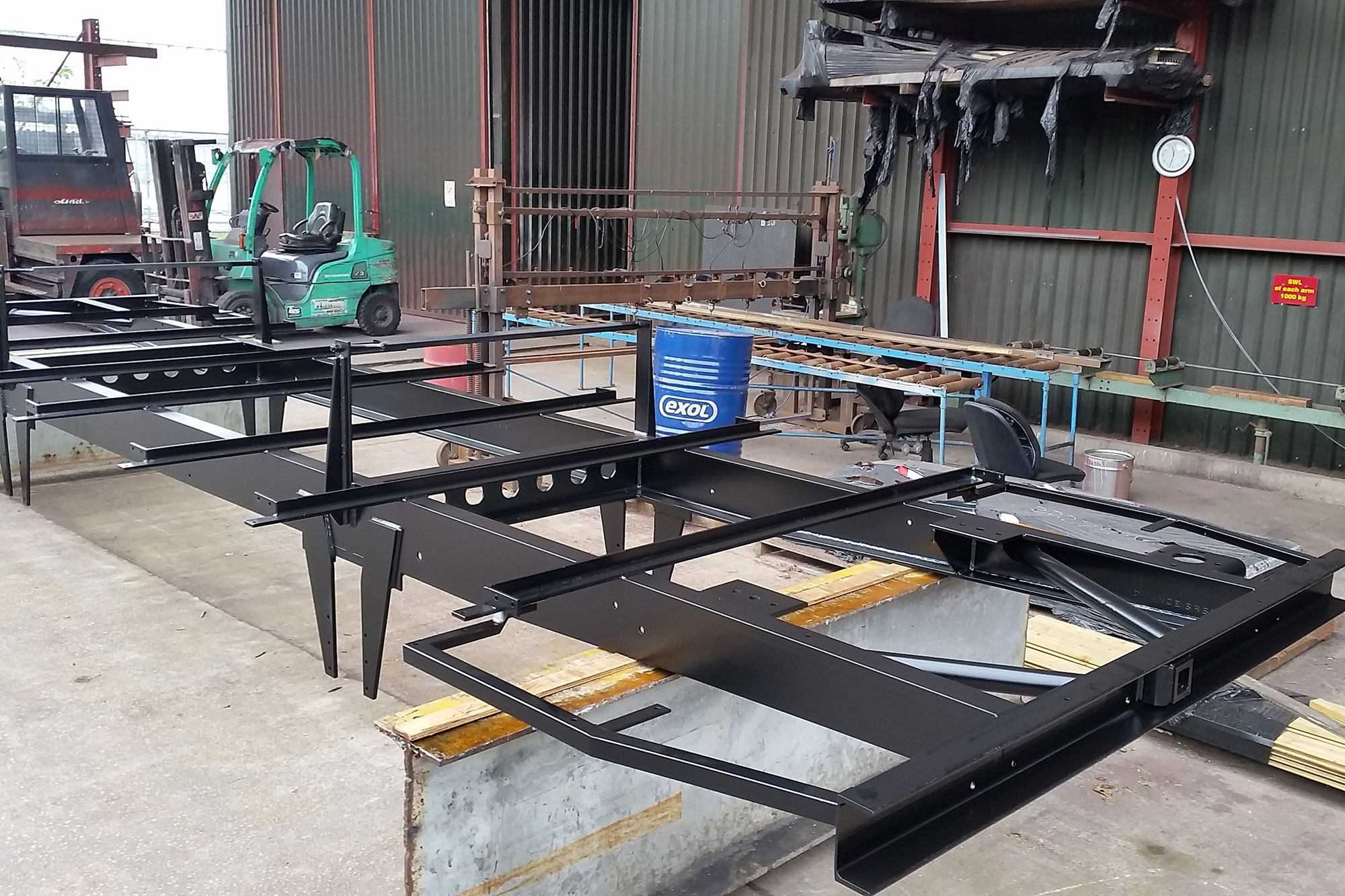
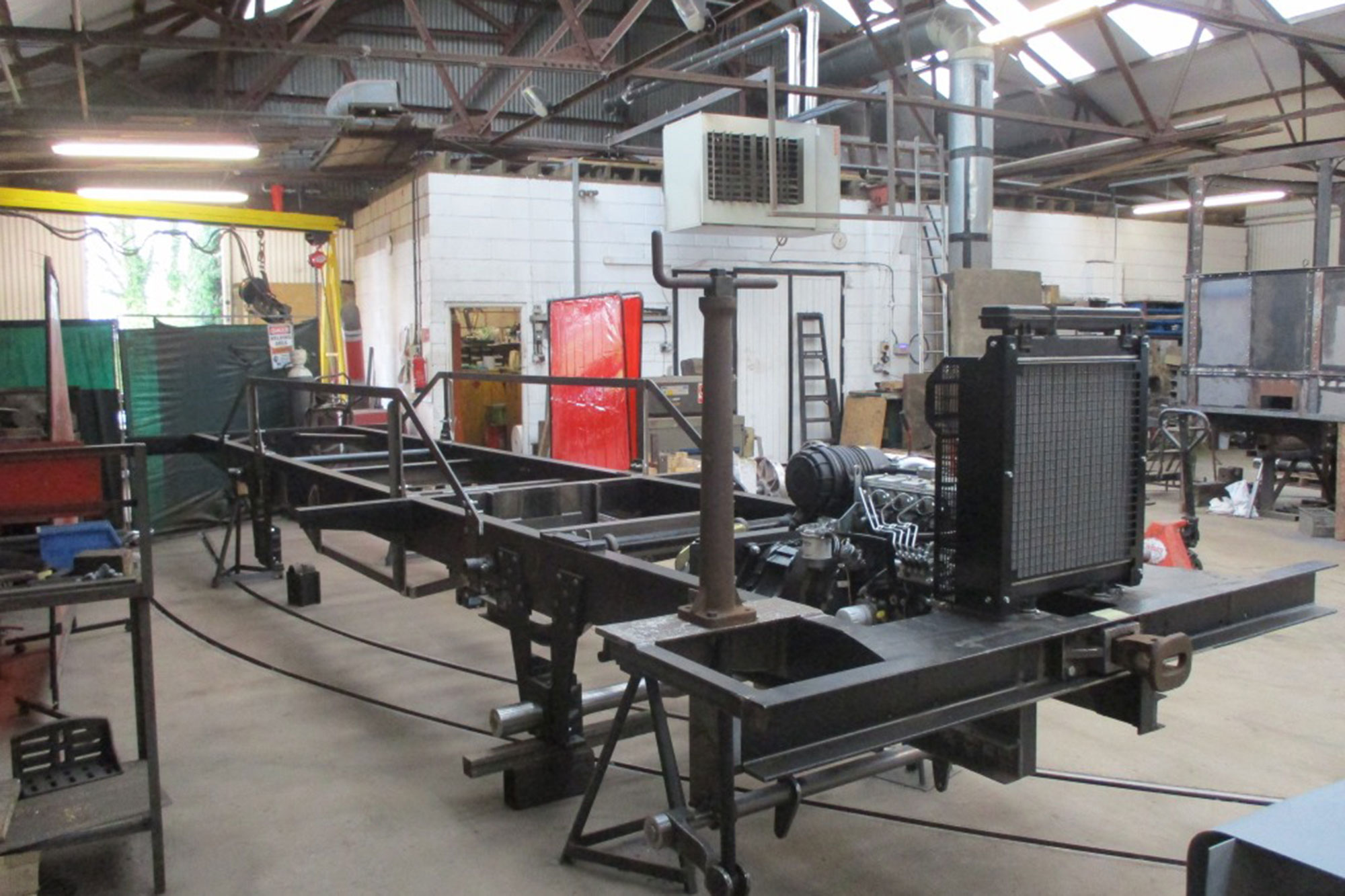
By January 2019 work on the Tram’s body was proceeding well at Alan Keef’s. Much work has been put into the framing to make it more suitable for the rigours of railway operation and thus the original specifications have received considerable upgrades. However, these changes are being carried out in a way so as not to detract from the original design; the additional bracing and framing is carefully hidden from view to ensure the appearance is as close to the original as possible.
Originally the Tram was driven from one end only. Current railway operating procedures no longer allow this so a driving position has been included in the trailer car when it comes to be built. However, in the short term, the tram itself will have a driving position at both ends. This will all be modified back to its original arrangement once the trailer car is ready and the driving position relocated into it. Great care is being taken to ensure this retro fitting will be simple and without major structural damage.
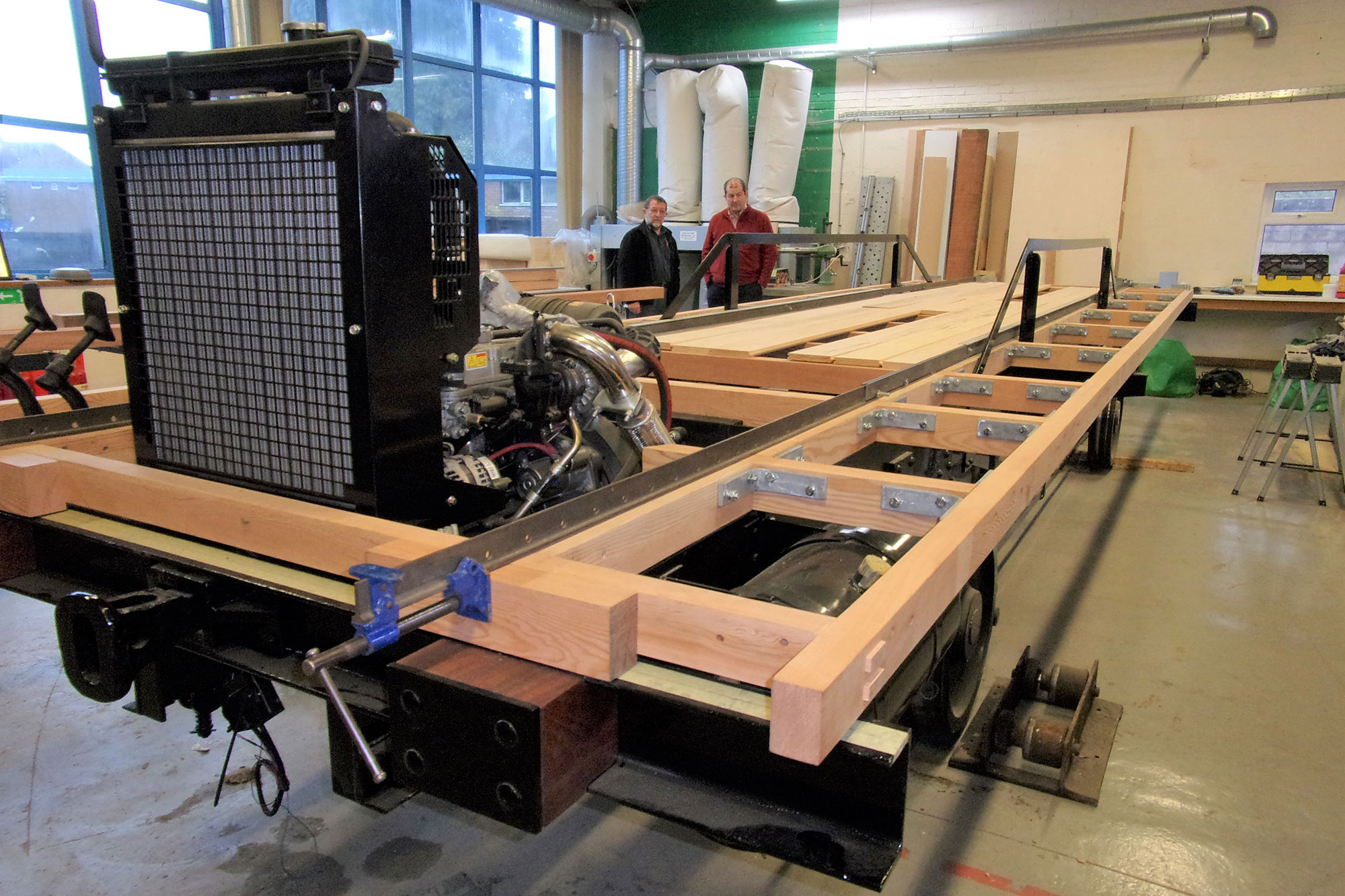
in service
The railcar returned to the Isle of Wight Steam Railway on 25 June 2021. After a period of testing, it was launched into service on 23 January 2022.
The railcar operates on selected days throughout the year, usually shuttling between Havenstreet and Wootton or Ashey. It has seats for 20 passengers who can enjoy a driver’s eye view of the line through the large windows at either end of the vehicle.
It is also possible for small groups to hire the tram for their exclusive use.
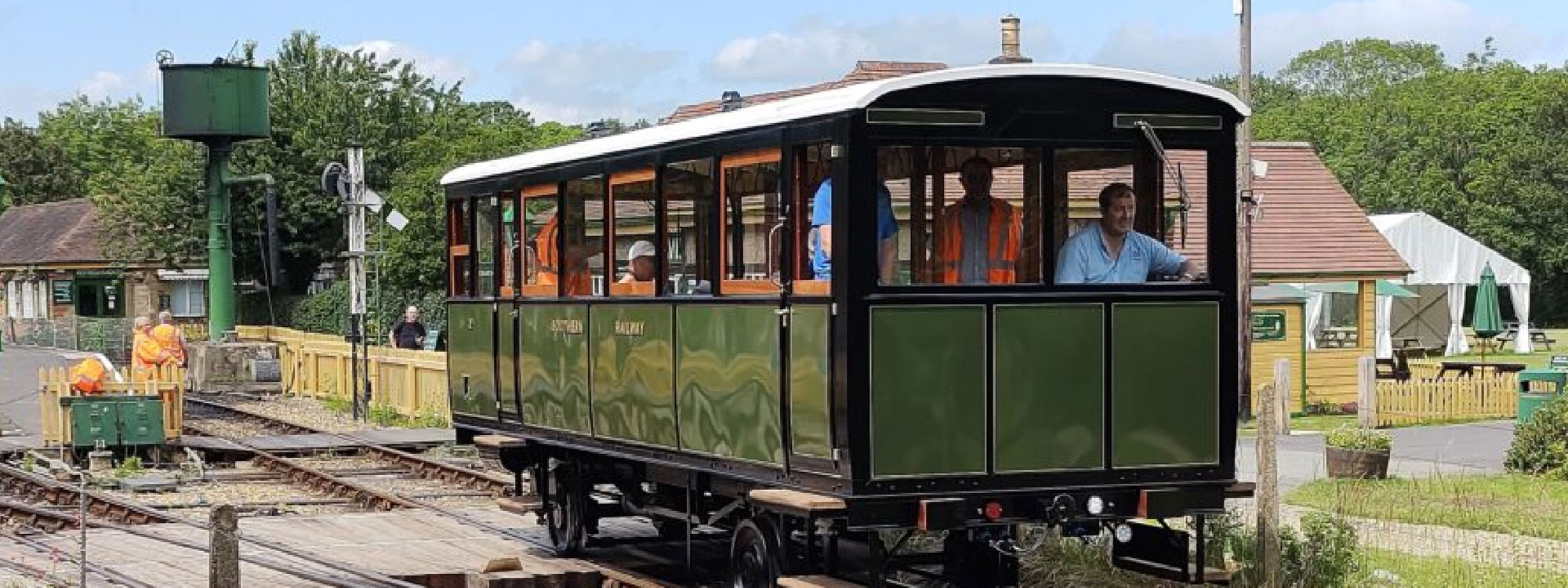
The Drewy Railcar sets off on its first test run from Havenstreet to Smallbrook Junction
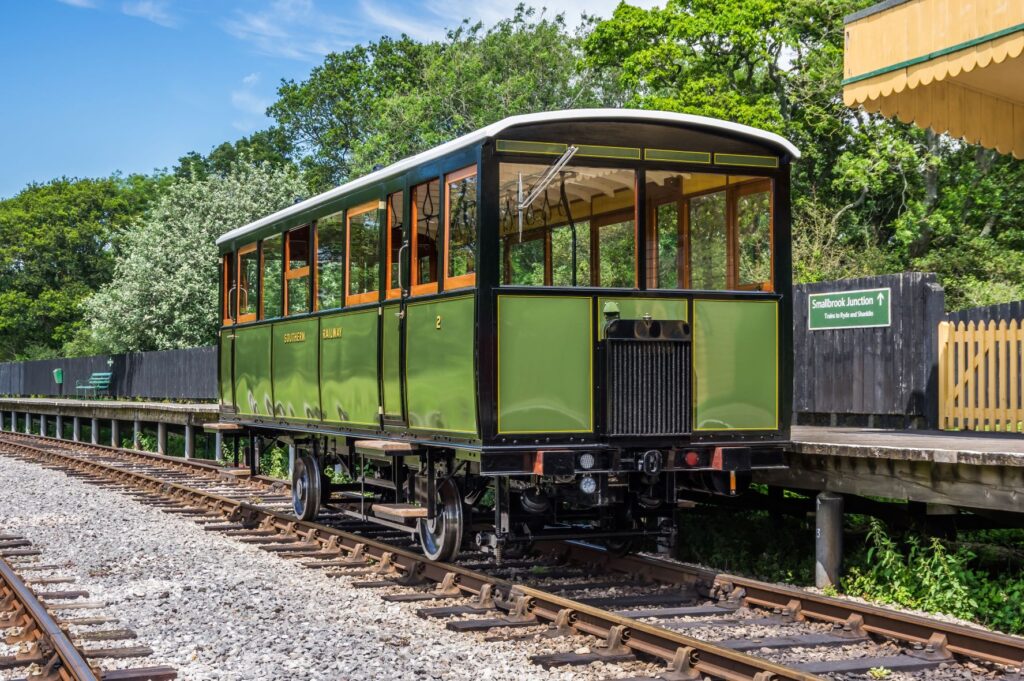
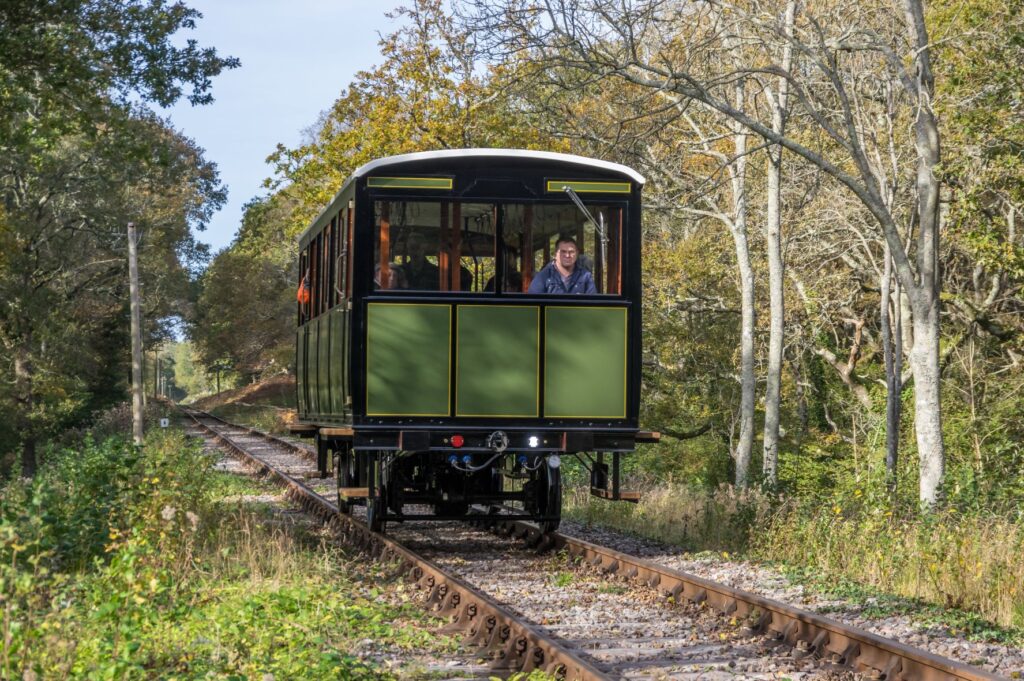
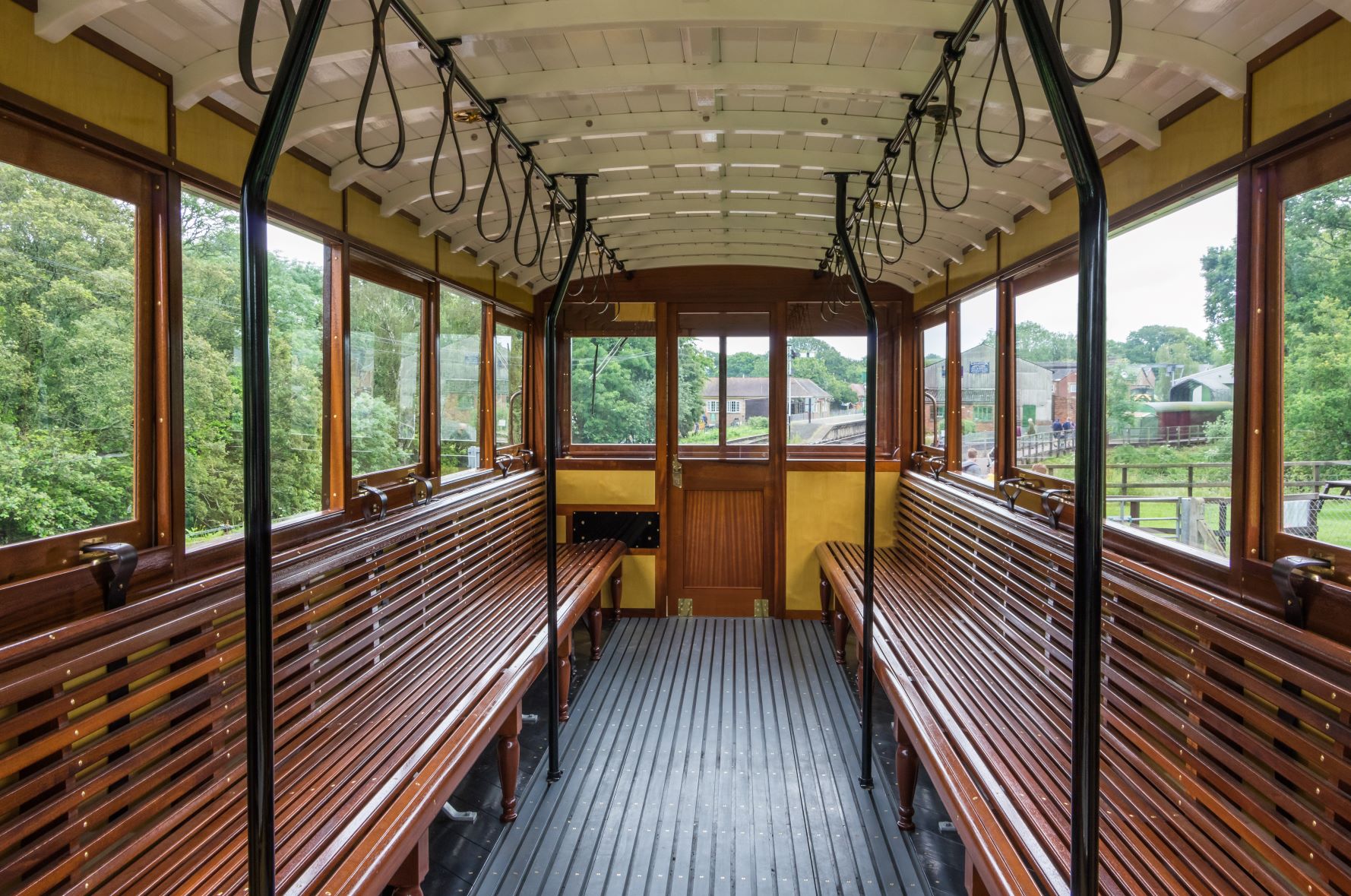
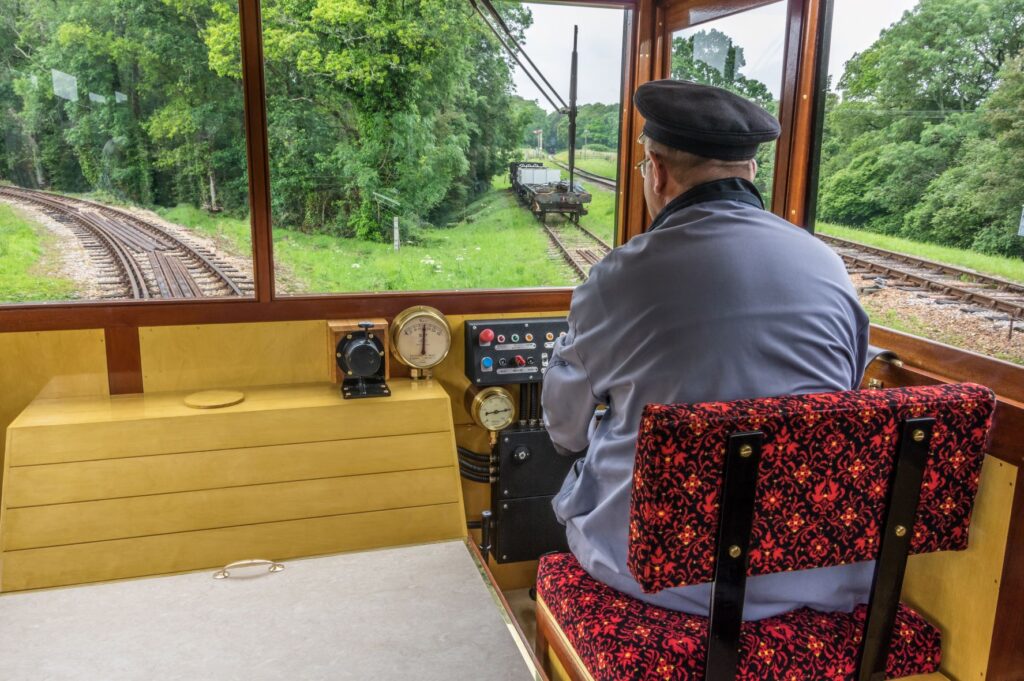

OPENING DAYS + TIMES
Our Havenstreet booking office and station open at 9.30am every day when trains are running…
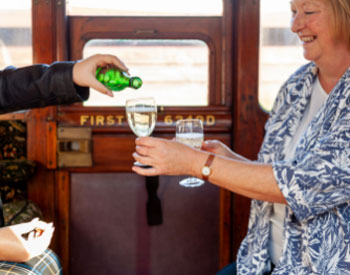
EXCLUSIVE EXPERIENCES
Go on treat yourself, whether you want to be at the coal face with the immersive Footplate Experience or you want absolute luxury…
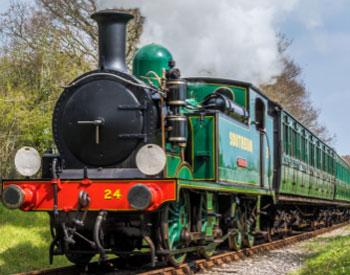
TRAIN RIDES
The Isle of Wight Steam Railway will take you back in time to the heyday of steam, our traditional steam trains…
